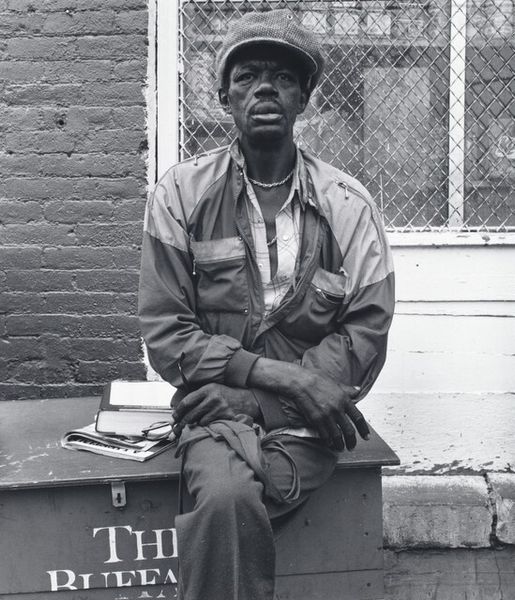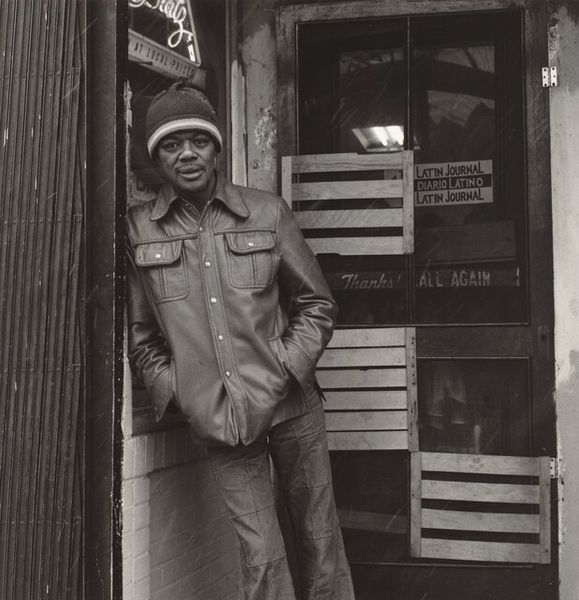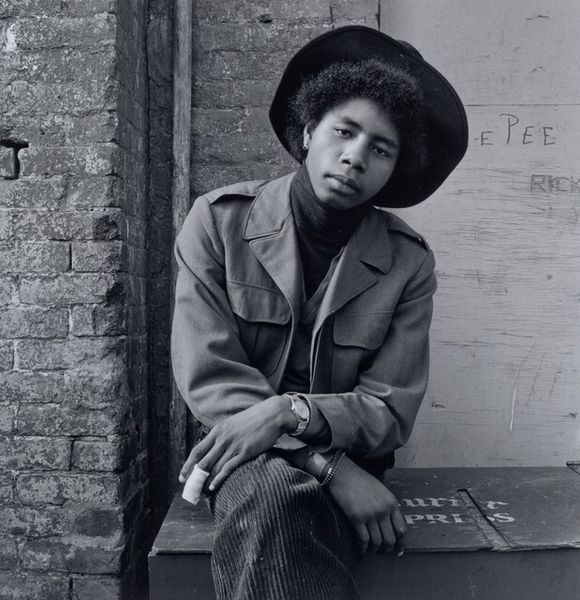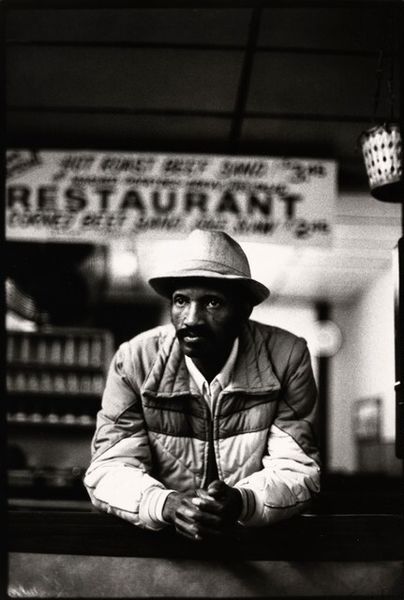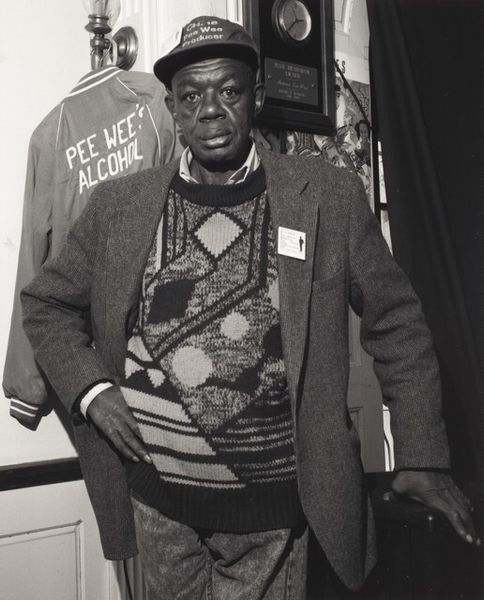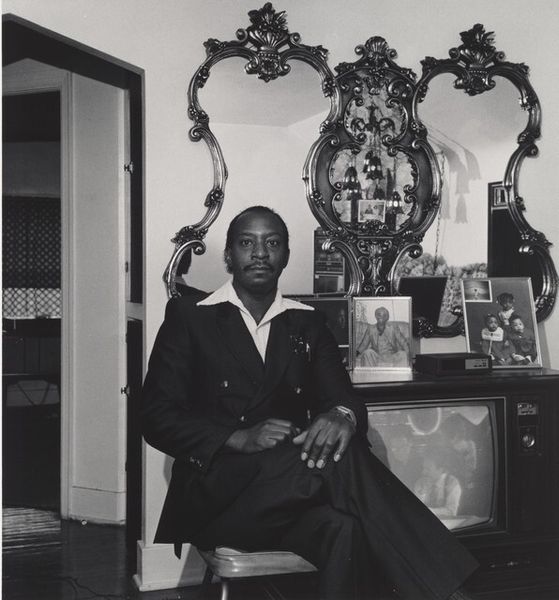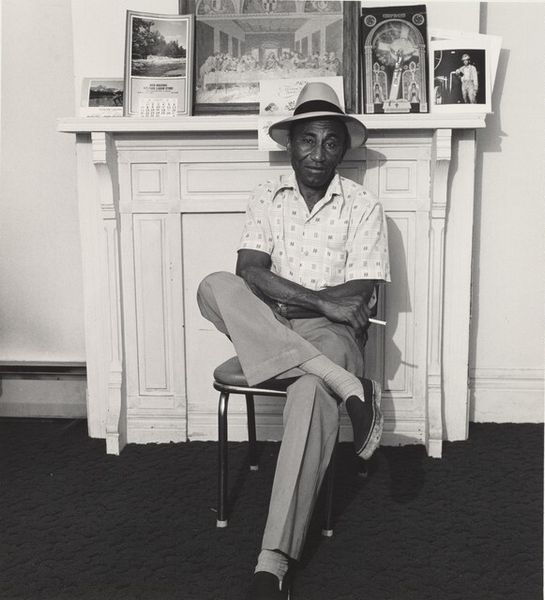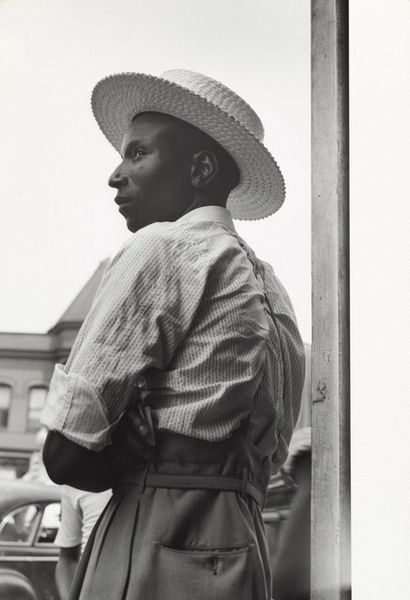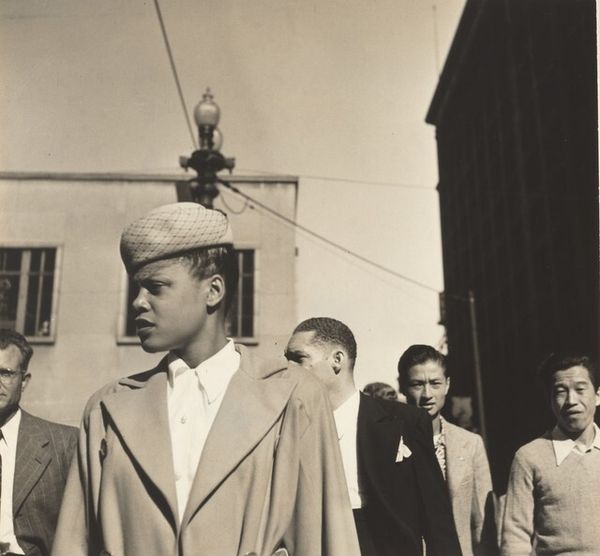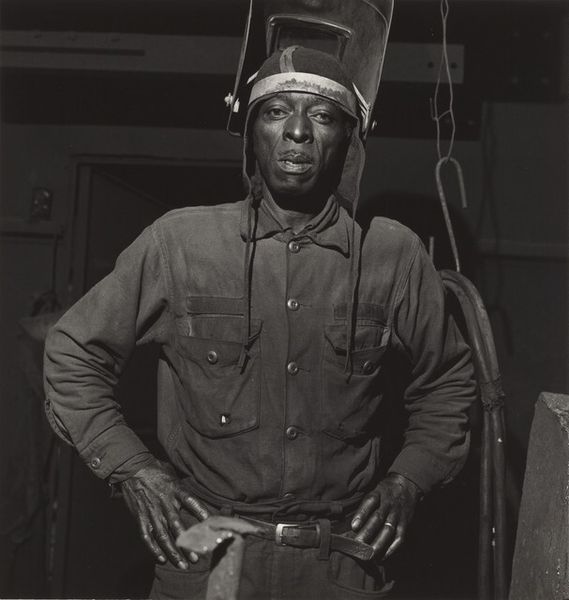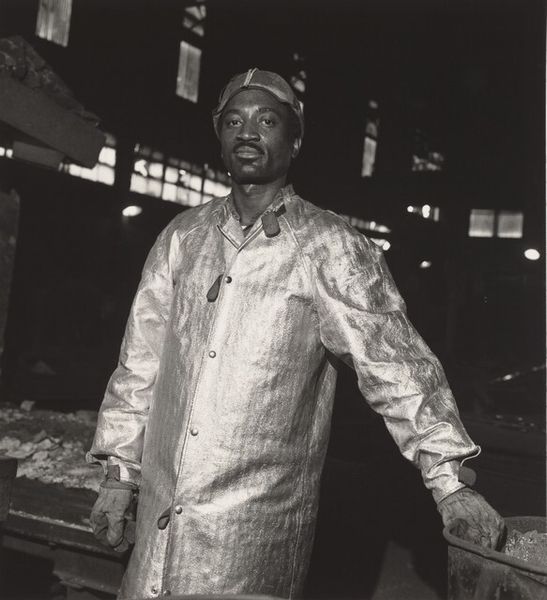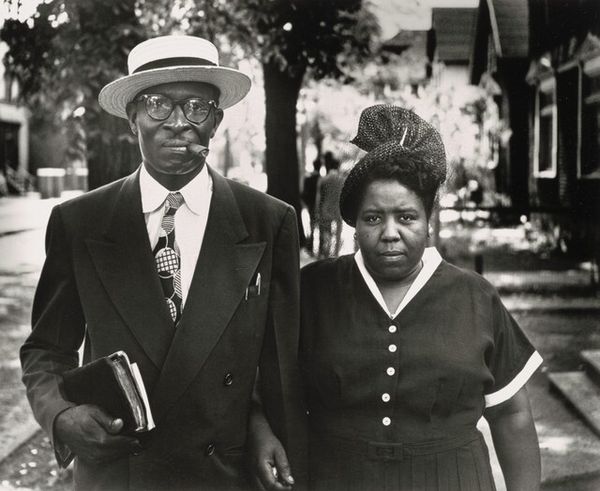
photography, gelatin-silver-print
#
portrait
#
black and white photography
#
social-realism
#
street-photography
#
photography
#
gelatin-silver-print
#
monochrome photography
#
realism
Dimensions: image: 18.2 x 16.6 cm (7 3/16 x 6 9/16 in.) sheet: 20.3 cm (8 in.)
Copyright: National Gallery of Art: CC0 1.0
Curator: Milton Rogovin captured this image, titled "Untitled (Lower West Side series)," in 1985. It's a gelatin silver print, a poignant example of his social-realist approach. Editor: It's funny, my first thought wasn't about social commentary, but about texture. Look at the tweed of his jacket versus the brick wall and the almost ghostly graffiti. There's something beautiful, though a little melancholy. Curator: Rogovin's work consistently turned its gaze to the marginalized. His Lower West Side series, in particular, documented communities often overlooked, exploring themes of poverty, resilience, and social inequality in the face of deindustrialization. We should read his portrait as a political statement about the city. Editor: Absolutely. And even with that heavier context, I'm still struck by the individual. His posture is so composed. Look at the cane—it’s functional, sure, but the way he holds it gives him a sense of dignity, almost regal. I wonder about his story. I want to know what kind of dreams that man harbors behind his somber gaze. Curator: Right. Placing Rogovin within a larger discussion about photographic representation becomes critical here. The series emerged at a time when discussions around identity and representation were gaining traction in the art world and society. We see Rogovin challenging mainstream media’s one-dimensional representations of those neighborhoods, emphasizing instead his subject’s complex humanity. Editor: It's a beautiful balance he strikes. This isn't exploitation; it feels like respectful observation. I mean, I am thinking now: What does it mean to present him as the hero of his own story, given the very visible economic hardship? Curator: Well, that is why Rogovin's images are more relevant than ever, encouraging dialogues about class, urban decay, and what constitutes ethical representation within visual culture. This photograph is more than just a portrait; it’s a document of a specific historical moment and also prompts much larger questions about who gets seen and how they are remembered. Editor: Exactly. Now that I am taking another look, I feel that Rogovin is forcing me to remember. To remember lives I would rather not confront. Now it's hard to ignore.
Comments
No comments
Be the first to comment and join the conversation on the ultimate creative platform.
